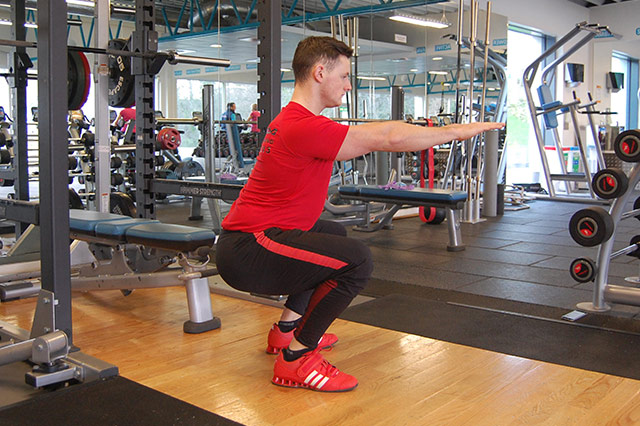OK, if you’re like me you have tried every training program under the sun that promises huge jacked muscles, strength gains beyond your wildest dreams and six pack abs that will turn heads. Are you blindly following programs that tell you exactly what to do but not WHY you are doing it? Well I’m sure you’ve realized that a lot of programs are all fluff and no substance. So what makes a solid training program that will get results? First off complex movements are the best bang for your buck, meaning any movement that targets multiple muscle groups. Free weight and body weight exercises are the number one key to all of my strength programs, no machines! What no machines? Yep you got it. Machines do not help train the stabilizer muscles and will not have as much effect on the entire body as free weights and complex movements. Now I am not going to hand you some random exercises and tell you that they are the holy grail of movement. What I will share with you is the knowledge I have gained in the trenches for over 12 years of training. I believe that the following 6 Pillars of Movement are the bare minimum movement patterns that any respectable program should contain.
PILLAR 1 – SQUATS
Squatting movements are one of the top all time complex movements. You don’t have to barbell back squat to reap the benefits of the movement. You can Squat using a lot of different objects and loaded positions. Example: Kettlebell front Squats, Sandbag Zercher Squats, Overhead Dumbbell Squats, Body Weight Lunges etc… WHOA! Wait a minute lunges under the squat category. Yep I consider any single leg lunge or leg movement to fall under the squat category and believe single leg training to be superior for the fact that it adds a whole other level of stability. If you’re not squatting you’re losing out on an amazing strength building exercise.
PILLAR 2 – HINGING
Hinging what the hell is hinging. DEADLIFTING! Why didn’t I just say so in the first place, well to be honest deadlifting scares the $#!+ out of people so instead I call it hinging. Deadlifting/Hinging movements are the king of building strong bodies. Hinging movements target pretty much the entire body but really focus on the hip, glute and back area. Any movement that causes you to HINGE at the hips to lift the weight or move your body to pick something up falls under this category. Example: Kettlebell Swings, Sandbag Shouldering, Kettlebell Snatches, Deadlifting and any movement that requires you to pick up an object. So just because you can’t deadlift 1000 lbs does not mean you should not practice the movement. Also hinging movements can be horizontal like suspension trainer knee tucks or V-ups
PILLAR 3 – PUSHING/PRESSING
Pushing and Pressing movements will build a strong chest, triceps, back and core. Any movement that causes you to push or press away from the body especially overhead is excellent for developing the upper body. Example: Push ups, Kettlebell Military Press, Dips, Pushing a Sled etc…
PILLAR 4 – PULLING
Pulling and Rowing movements will build a strong back, biceps, shoulders and core and are also key for developing a strong upper body. Example: Pull Ups, Renegade Rows, Kettlebell Cleans, Kettlebell Snatches, Sandbag Shouldering etc… A lot of the hinging movements also fall into the pulling category so when creating a program I add in a vertical overhead pull or horizontal row that mainly targets the upper body, where the hinging movements usually target the entire body.
PILLAR 5 – ROTATION
It amazes me how many people do not train for rotation. Rotation training will help prevent so many injuries and build a strong lower back and abs. There are a lot of exercises that cause you to resist rotation such as Renegade Rows, but you still need to train for Active rotation. To train with active rotation you need to use a twisting full range of motion. But the key in rotating movements is to use the upper body and hips to rotate while maintaining a neutral spine. Example: Medicine Ball Wall Slams, Twisting Planks, Sledge Hammer Baseball and Golf Swings, Wood chops etc… I believe this is the biggest movement missing from most programs. Adding in rotational exercises will help loosen up the body and help your mobility and stability sky rocket.
PILLAR 6 – LATERAL MOVEMENT
Lateral exercises are another element I believe many people are lacking in their training programs. Moving laterally helps develop better mobility, agility and speed. When training for lateral movements, you are ultimately enhancing the capacity to create and tolerate angles that will allow you to redirect your body to and from a variety of directions witch will lead to better performance at any sport or athletic movement. Example: Plyometric Side Hurdles, Lateral Lunges, Side Step Ups, etc…
So if you want to gain more agility, mobility, power and strength apply the 6 pillars of strength to any program and see how it stacks up. Good Luck, God Bless and Go LIFT!




